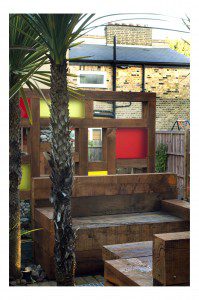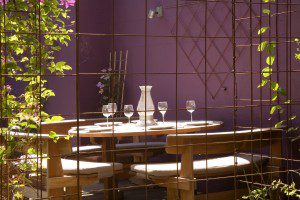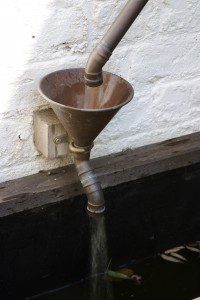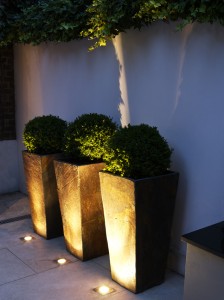Garden Features

It is critical to remember that vertical interest is just as important for a successful garden design as its horizontal layout. Adding height into the centre of the space can help to lessen the impact of imposing boundary walls. Similarly if you have a large tree in one corner then adding a vertical feature diagonally opposite will help draw the eye-line gradually down across the space. Height can be achieved in a number of ways – from the plants you choose to hard landscaping features – and can be vital to the balance and harmony of the design. Vertical interest can be used to create intrigue and accentuate the technique of dividing the space up into smaller sections. For example, adding a series of screens along the edge of a lawn running across the garden, masking or partially masking sections of the space, encourages the user to seek out what is beyond. Using vertical features to work with the layout of your garden will help emphasize shape and form, e.g. with archways across a pathway, whereas features that work against the layout will make for an exciting dynamic finish, such as planting beds cut into lawns.
Features in gardens can take many forms and allows one to inject personality, whimsy and style into any design. The creativity that you can employ with garden features can make or break a design. Such features do not have to be expensive – with a little thought and ingenuity you can achieve high impact at reasonably low cost. There are three main groups of features – static, animated and soft landscaping – and a good design will usually employ a combination of all three for maximum impact.
Static features will principally include things that are built using hard landscaping techniques, such as feature walls, screening in the garden, arches, decorative inlays (in paving or walls) pergolas and buildings. A typical static feature will often be fixed in place, although the category will also include freestanding objects such as sculptures and decorative pots that will usually remain in a certain spot but can be easily re-located if required. Static features can be great for creating an interactive, experiential element for the garden user – tunnels can be walked through, arches and screens help to guide one through the space. They help define how the garden should be used, creating aesthetic and practical markers in the space. In this sense furniture can also be deployed as a feature, dictating where you want people to sit or lie in the space, as well dictating which view you would like them to engage with.
Animated features have an element of movement about them that creates a dynamic structure to the space. Such features would include most water features, wind chimes, wind socks, lighting, swings and swing seats, even a bird table. Anything that is altered by interaction with its environment or by mechanical means, creating noise, movement, changing colour, etc, falls into the animated feature category. While these types of feature will usually be less prevalent in a garden, they can help to breathe life into your design and serve to complement a static feature – for example a stainless steel water blade mounted on a feature wall.
Soft landscaping in this instance known as specimen planting, is the most subtle of the three feature categories. Specimen and block planting can be used to add rhythm, flow and structure to a design. For example a series of topiary balls in planters can add rhythm and structure to a pathway, while a lavender hedge can accentuate the edge of a border or used repeatedly through a garden can help create harmony through a space. Planting can also be used to create architectural interest, especially structural plants such as Italian Skyrockets, Silver Birch, Cordyline, or tree ferns. Pots and planters can also inject colour and style – for example using brightly coloured fibreglass planters – or personality if you use planted junk and old pots.
It should be noted that the three feature categories are not mutually exclusive – there is often overlap, for example a fixed swing seat falls in both the static and animated categories while tall grasses that sway in the wind could be considered animated soft landscaping.




